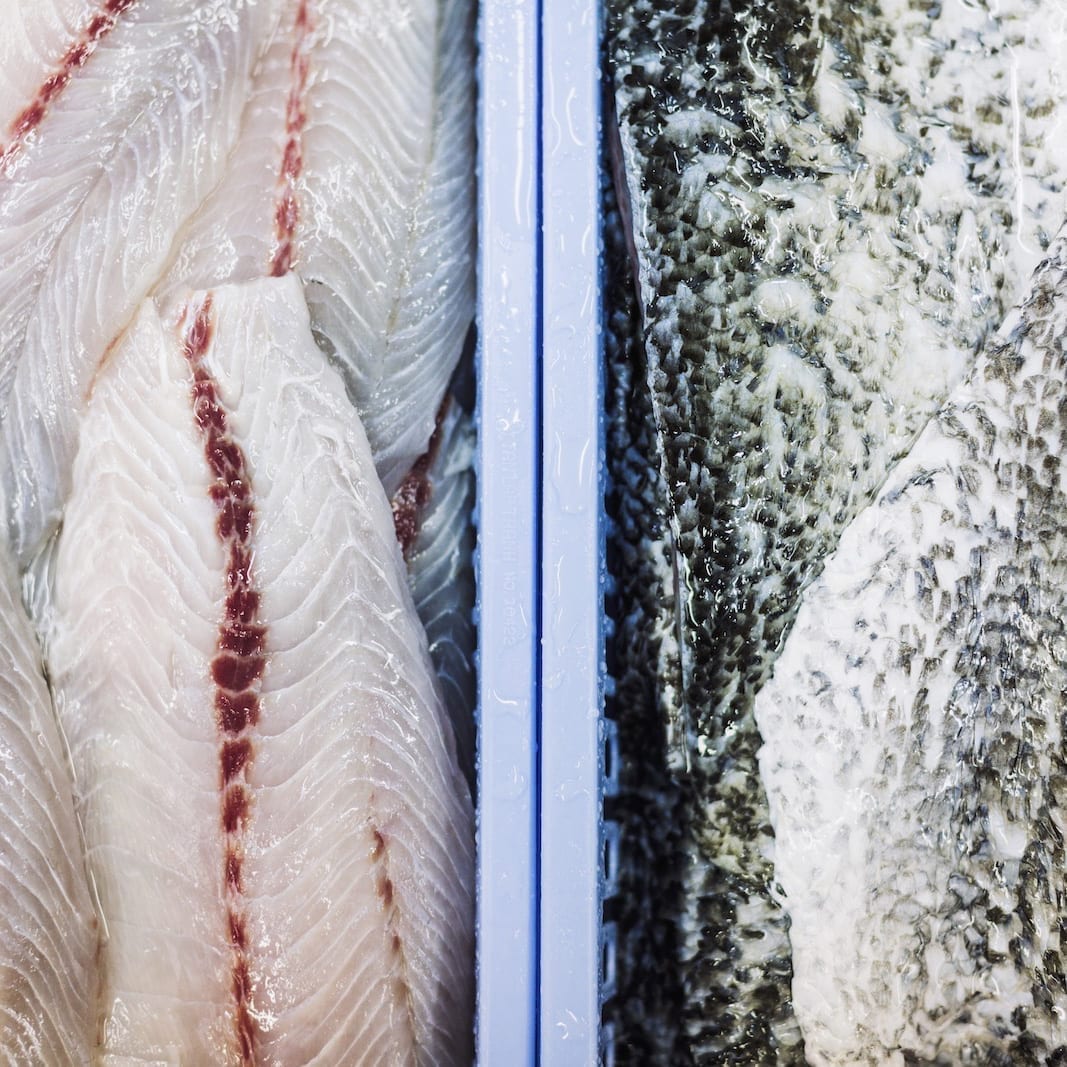Shop Like a Pro: Your Guide to Choosing the Best Sustainable Fish

There are a few things to consider when buying fish, including price, how and when you intend to cook it, your comfort level in the kitchen, and sustainability.
Use this guide to make choosing sustainable fish easier when you’re at the fish counter.
Whole Fish or Fillet?
Just like with other types of animal protein, different cuts of fish are used for different purposes. Choosing sustainable fish varies by what types to buy based on how you want to prepare your fish and what flavors you prefer.
Keep in mind: Underutilized cuts like the fish collar are full of flavor and worth a try. Not only are they less expensive than both whole fish and fillets, but buying them helps drive demand for traditionally overlooked scraps.
When to Buy Fillets: Fish fillets are convenient and accessible for prepping and cooking, especially if you want to saute or fry your fish. Fillets often cook faster, and when deboned can be easier to eat.
When to Buy a Whole Fish: Whole fish are perfect for grilling and roasting, but they do involve a bit more effort in the kitchen in terms of prep. In addition, when cooking a whole fish all of the fish can be used. This not only makes it a very good value for your money, it also reduces food waste.
How to Find the Best Quality
Whether a fish is fresh or frozen is not indicative of its locality or quality. If fresh sustainable fish is unavailable, frozen can be a good—and sometimes even a better—alternative. Most frozen fish is typically flash frozen within hours of being caught, preserving the fish at its peak freshness. Fish frozen in this way are nutritionally no different than their fresh counterparts. If thawed properly, it will have no difference in texture when compared to fresh fish and will have the added benefit of lasting longer until you are ready to cook it.
What to Look for When Buying Fresh: A fresh fish should be firm and moist with skin shiny and intact. If you can, poke the flesh: it should bounce back, not sink in. Give it a sniff: fresh fish should smell like the ocean or not at all. (It should never smell fishy.) Avoid, fish that appears to be leaking fluid as this is the first step of rot. When buying a fresh whole fish, look for bright, clear eyes, and red or pink gills.
What to Look for When Buying Frozen: Look for an eco-label on any packaging for frozen fish as it indicates a certification of sustainability and individually vacuum-packed pieces. Ice crystals formed on the outside of the packaging are fine. However, ice crystals on the fish itself indicate that the fish was thawed and refrozen before arriving at the store.
Read more in our Essential Guide to Sustainable Seafood series: